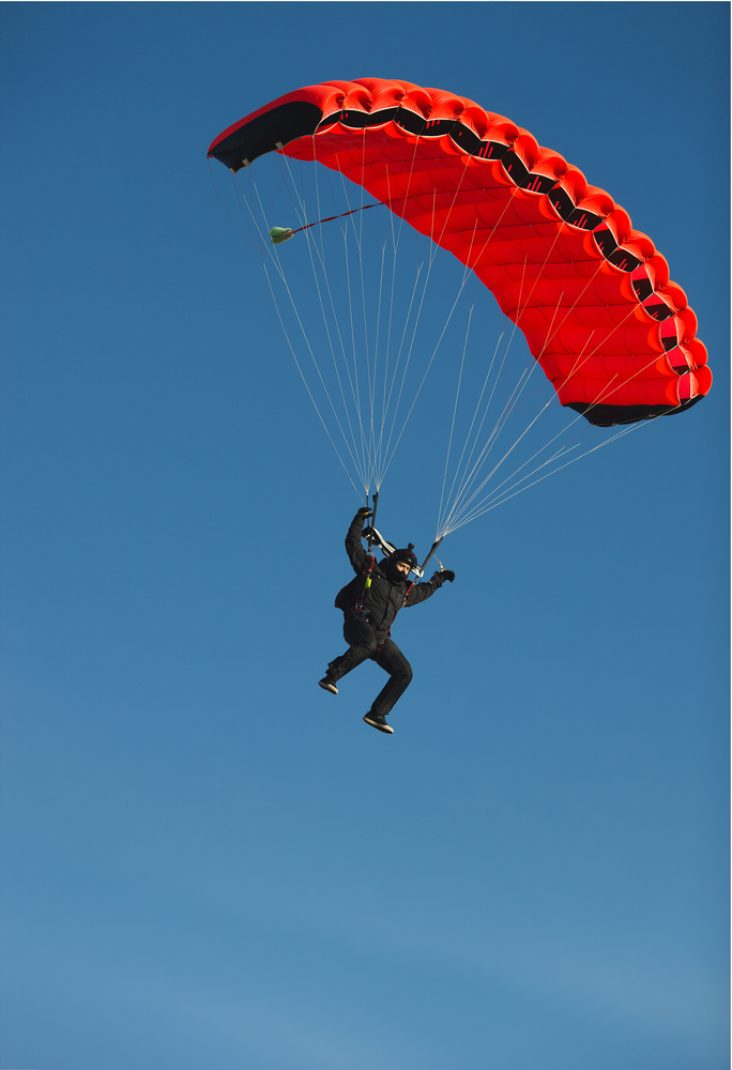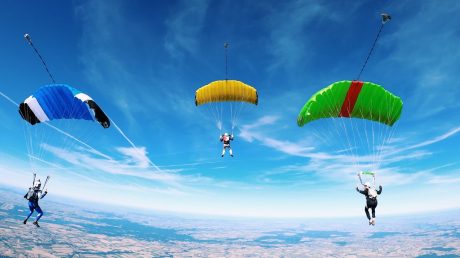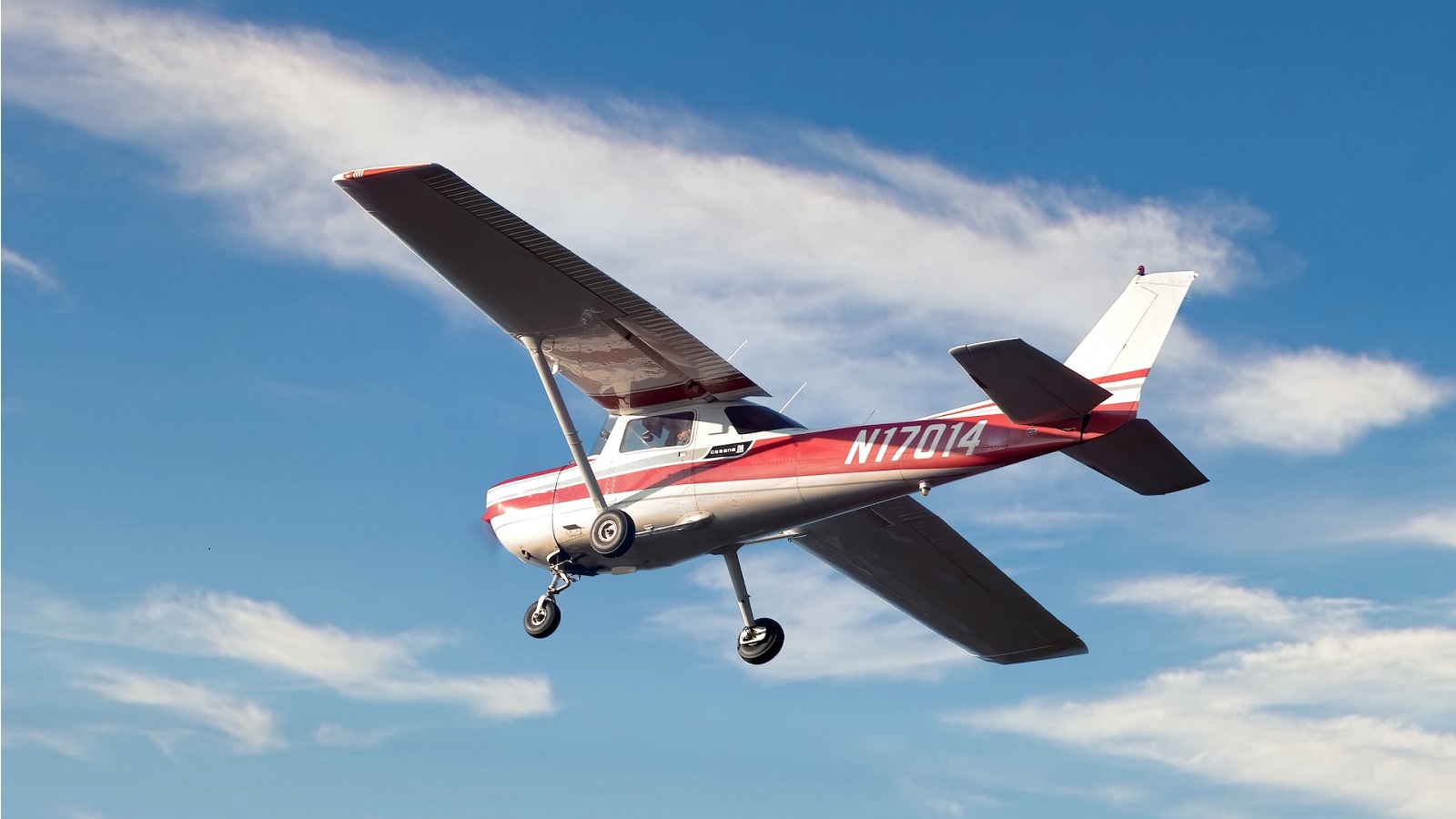Skydiving has become increasingly popular in recent years, particularly charity jumps by university students. There are currently around 28 British Skydiving Affiliated Parachute Training Organisations (PTOs) in the UK. Like any other extreme sport, skydiving carries risks.
Rebecca Smith, a Legal Director in Stewarts’ Aviation team, examines the sport of skydiving in the UK in the context of bringing a personal injury claim when things go wrong and addresses concerns around how safe it is.
Different types of skydiving
There are three types of skydiving: a tandem jump, a static line jump and an accelerated free fall. All three types of jump require training as detailed below.
In the UK, the British Parachute Association (BPA) is the national governing body for skydiving. There are currently around 28 parachute training organisations (PTOs) in the UK, all affiliated to the BPA. All training must be provided in accordance with the BPA’s regulations.
- Tandem jump
Tandem jumps are typically performed by novice jumpers strapped to an experienced instructor.
Of the three types of jumps, a tandem jump carries the lowest risk profile, with an injury risk of around one per 1,000 jumps and a fatality profile of 0.12 per 100,000 jumps.
For the jumper, the training requirements are limited as the instructor has overall control of the jump. Using appropriately checked equipment is essential.
- Static line jump
A static line jump is where a parachute is opened within a few seconds of leaving the aircraft through a ‘static line’. The injury rate for novices is around four per 1,000 jumps.
The jumper is required to undergo training in accordance with the BPA’s Operations and Category Systems Training Manuals.
If the training is applied strictly, the jumper should be fully equipped to perform a safe skydive.
- Accelerated free fall
This jump involves a free-fall of several thousand feet before the jumper opens the parachute themself. Two experienced skydive instructors will accompany novices. The injury rate is approximately one per 200 jumps. Jumpers must undergo a training process similar to that given to static line jumpers.
Skydiving health and safety
The BPA publishes data that offers useful insight into the statistics behind skydiving accidents and can inform the uninitiated whether they wish to participate in a skydive.
Between 2016 and 2020, across all levels of jumpers, there were 1,357,671 skydives according to British Skydiving. The definition of injury is broad and can mean anything from minor cuts and bruises to serious injuries such as fractures or spinal cord injuries. The majority of injuries from skydiving are significant and life-changing and can result in fatalities.
Taking data from all levels of jumpers combined, there was an injury rate of 0.5 per 1,000 jumps between 2016 and 2020. Given the comparatively few fatalities, it is necessary to expand the data to the last 20 years. Between 2001 and 2020, across all jumpers (5,440,637 jumps), there were 39 fatalities. This translates to a fatality rate of approximately 0.7 per 100,000 jumps.
Although the risk of incurring an injury or even perishing in a skydive is relatively low, the jumper needs to be aware of the dangers as different methods of parachuting carry different risk profiles.
Consenting to risk
The legal concept of volenti non fit injuria, the principle of consenting to risk, is one frequently applied to extreme sports such as boxing. The significance of this is that if someone willingly places themselves in a position where harm might result, they may not be able to bring a claim should they suffer injury.
Under English law, volenti is a full defence, meaning if a defendant can show the following steps are satisfied, they are fully exonerated:
- The injured person was fully aware of all the risks involved, including both the nature and the extent of the risk, and
- The injured person expressly/or implicitly consented to waive all claims for damages. For this element, simple knowledge of the risk is not sufficient.
A voluntary assumption of risk can be raised by the defendant where the individual making the claim can be shown to understand the risks and have voluntarily waived them. In the context of skydiving, a skydiving organisation might be able to rely on this argument if they can point to having provided a thorough education programme to the jumper in accordance with the relevant regulations.
The above will not apply in accidents resulting from failures in equipment, even when the skydiver has accepted risk, as such accidents are likely to result from negligence on the part of the skydiving operators.
Can you bring a claim after a skydiving accident?
Even if a jumper signs a waiver before a jump, this does not automatically preclude all potential claims. A claim may still be brought where the injured person can show that the defendant (here likely to be the skydiving organisation providing the training and the jump) was negligent in their duty towards them whether relating to training or defective equipment, and their breach of duty is responsible for the injuries or damages suffered.
There are several challenges to bringing a claim. Skydiving is an inherently risky sport. A defendant may attempt to argue that you have voluntarily accepted the risks involved, and therefore a claim cannot be brought. A defendant may also point to a waiver document you may have signed before participating in the jump in which you have essentially agreed to waive your right to bring a claim.
Such hurdles can be overcome with specialist aviation solicitors and the right evidence. Where failures in the training process or on the jump can be established, and/or failures in respect of equipment, negligence is likely to be established.
As safety standards and equipment improve, the likelihood of accidents arising from faulty equipment falls, but the risk of such failures remain. Human error is and will remain the most significant contributor to skydiving accidents. Errors can result from failures in the training provided leaving the jumper ill-equipped and at risk, or simply due to poor decision-making by the jumper. Claims may be brought despite signing a waiver where it can be shown there has been negligence that results in an accident and injury.
How we can help you
If you have been involved in a skydiving accident and want to explore the possibility of a claim, please contact Rebecca Smith of the Stewarts’ Aviation team at rsmith@stewartslaw.com.
You can find further information regarding our expertise, experience and team on our Aviation pages.

This article was first published in November 2022 and updated in June 2025.
Subscribe – In order to receive our news straight to your inbox, subscribe here. Our newsletters are sent no more than once a month.






